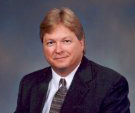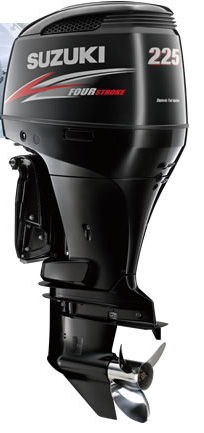Bean appeal in Barhanovich case heard by U.S. Court of Appeals for 5th Circuit
As to what led up to the appeal, see our post titled, Barhanovich case: Suzuki released, Bean appeals
The Expert Reports
A little more information on the expert report in question and its timing is below.
Bean’s expert, Edward Fritsch of ATA Associates, prepared an expert report dated 19 October 2014. At the end of the report, he lists a total of 3 opinions. They were basically, (1) But for failure of the Suzuki outboard swivel bracket, the engine would not have entered the boat and struck Mr. Barhanovich. (2) The extent of fracture of the swivel bracket on the Barhanovich boat is much greater than that of similar brackets failed in the lab and requires evaluation of the properties of the specific bracket on the Barhanovich boat. (3) If Mr. Barhanovich knew a dredge pipe was in the area, he should have been going less than 28 mph.
Per Bean, Suzuki did not provide full responses to their discovery til 6 April 2015.Edward Fritsch, Bean’s expert, filed a supplement (update) to his report on 30 July 2015 said to be based on additional things learned from Suzuki’s disclosure. In this report Mr. Fritsch lists a total of 10 opinions, all of which target Suzuki.
Suzuki basically claimed the first expert report was not relevant because it did not make direct claims against Suzuki.
Suzuki claimed the second report introduced ideas and opinions not in the first report. Per Bean supplemental reports were only to expand on ideas previously discussed, not to introduce new opinions.
Suzuki was thus able to get both reports and Mr. Fritsch’s testimony (deposition) tossed from the case on 16 September 2016, just two weeks before the scheduled trial.
That left Bean holding an empty bag when Suzuki moved for summary judgement.
The judge granted summary judgement to Suzuki and Bean appealed.
The Appeal
On 3 March 2016, Bean filed an appellants brief in which they outline and support their arguments.
Page 2 of Beans appellant brief states 6 issues for review:
1. Did the court error in excluding Bean’s original expert report?
2. Did the court error in excluding Bean’s supplemented expert report based on Suzuki’s slow discovery responses?
3. Did the court error in relying upon the parallel criminal proceedings to decide the civil liability issues?
4. Did the court error in dismissing Bean’s claims against Suzuki?
5. Did the court error in refusing to allow metallurgical testing of the Suzuki outboard?
6. Did the court error in its application of the concepts of proximate cause and superseding cause?
On page 9 (labeled as page 9 at the bottom) of that briefing, Bean says they were unable to depose Suzuki’s corporate representative from Japan til 28 May 2015.
from Bean’s appellants brief
“Bean also attempted to conduct the deposition of Suzuki’s corporate representative from Japan which could not be arranged until May 28, 2015. It was not until this discovery occurred that Bean became fully aware of: (1) the industry’s relatively unknown practice of “driftwood testing”; (2) the knowledge of outboard engine manufacturers’ of the problem with engines flipping into boats; and, (3) a prior incident in which a Suzuki engine had flipped into a boat, severely injuring a passenger.”
One interesting bit of information on page 10 of the briefing, Bean reveals the amount of the award to the Barhanovich family. They say Bean and Archer (another firm tied to the dredging operation) settled all Plaintiff’s claims (the family’s claims) for $5 million while reserving Bean’s right to sue Suzuki to reclaim part of all of that award.
In October 2015 the U.S. Attorney General filed criminal manslaughter charges against Bean in the matter of Mr. Barhanovich’s death. Bean took a plea agreement in which its executives escaped direct charges, but the company pled guilty. They were fined the maximum amount under law.
On page 10 of Bean’s appeal briefing, Bean complains the U.S. Attorney General described the charges brought by their office in extensive detail along with the factual circumstances, even showed a slide show. Bean feels this unfairly biased the Judge given the U.S. Attorney General’s discussion of Beans’ failures to properly mark the dredge pipe as the proximate cause of the accident.
Oral Arguments
On 31 August 2016, U.S. Court of Appeals for the 5th Circuit heard arguments from attorney Andrew C. Wilson for Bean.
The oral hearing was recorded, lasts about 45 minutes, and is available from the 5th Circuit at C.F. Bean v. Mark Barhanovich.
In his oral arguments, Mr. Wilson cut his six issues down to three, (1) Is a party bound by an initial expert report before discovery is supplied, (2) When a plea bargain arranged by U.S. Attorney for the criminal case they presented a slide show he thinks influenced the Judge, (3) the lower court Judge said you could not proceed to trial in a products liability case without an expert (the Appellant Judge said the lower court Judge’s statement referred only to this case based on its complexity).
Mr. Wilson talks a lot about swivel brackets and says people don’t know about them, but the judge disagrees. Mr. Wilson argues that 5 other boats hit the dredge pipe and their outboard did not break off. So Suzuki’s outboard is defective and caused the accident. He says the only people that know about this problem are the engine manufacturers themselves. They have driftwood test. He said the dredge pipe was about 10 inches in diameter. (I think it was about 16 inches in diameter as did the lawyer for Suzuki during the oral argument.).
At about 11 minutes into the oral argument Wilson says the speed found by the expert of 28 mph ruled out Barhanovich because that is a normal cruising speed for this boat, “if anything, its slow”, it effectively rules out Barhanovich as a contributor to the accident. (Lets just say that’s not the way Bean told it earlier when they were trying to lay the blame on Barhanovich.)
The Appellant Court Judges were pretty rough on Mr. Wilson, representing Bean, but that is the way they typically are in the cases we have listened to before. The Judges come in knowing that while some of the cases were under review were really wronged by a lower court, in the bulk of them, whoever lost the case is just unhappy with the verdict.
The case now awaits a ruling by the U.S. Court 5th Circuit Court of Appeals to see if it goes back to the Southern District of Mississippi or if the appeal is rejected. If the appeal is rejected, Bean still has the option to appeal to the U.S. Supreme Court.
Our Comments
We are not lawyers. Purely as armchair quarterbacks watching a replay of the game, we have these comments:
- Obviously it is the world’s greatest understatement to say, first off, Bean should have properly marked the dredge pipe. The pipe was in a high traffic area for recreational boats, Bean often floated the dredge pipe to move it, dredge pipe tends to snake (form “S’s”) as it doubles back on itself when it is floated or when it is not stretched all the way out (makes it harder to guess the path of the pipe, and a straight line path may cross the pipe multiple times). Given those characteristics, Bean could have been proactive and even reduced the minimum distance required between buoys by law for marking the dredge pipe.
- Immediately after the accident, Bean should have been aware they were on tap to possibly be liable for several million dollars in the death of Mr. Barhanovich. It seems like Bean was aware of this potential liability because they filed the plea for protection under the Jones Act (an attempt to limit their liability to the value of the barge associated with pumping the dirt onshore and its contents). It seems like Bean should have also immediately began trying to find somebody to share the load with (besides Archer another firm related to the dredging operation). Bean could have filed their third party complaint against Suzuki of Japan the moment the widow filed as a claimant in Bean’s plea for protection under the Jones Act.
- Bean should have focused their blame on Suzuki of Japan, not on Barhanovich. Trying to blame a stellar, super citizen like Mr. Barhanovich and by association, his grieving widow, will not get you lots of points with a jury. Plus trying to blame Barhanovich just focuses more attention on the dredge pipe that Bean did not properly mark. It draws more attention to Bean’s fault in not properly marking the pipe, than on any potential contributory fault of Mark Barhanovich.
- Bean should have immediately figured out the U.S. arm of Suzuki went bankrupt after the accident and was reconstituted avoiding all previous liabilities. Suzuki in Japan should have been their only target once Suzuki of America’s bankruptcy proceedings were complete. Bean spent a bunch of energy and money going after the U.S. arm of Suzuki and the jack plate manufacturer. Both were dismissed from the case.
- Bean needed a better theory for why they thought Suzuki was responsible than (1) several other boats hit our dredge pipe and their outboards did not break off and flip in and kill anybody, (2) the only outboard motor that broke off and flipped in was a Suzuki, (3) therefore this accident is Suzuki’s fault. That defense just reinforces what the judge and jury already know (Bean did a poor job of marking their dredge pipe and boats kept hitting it.)
Time will tell what the Appellant Judges have to say.

